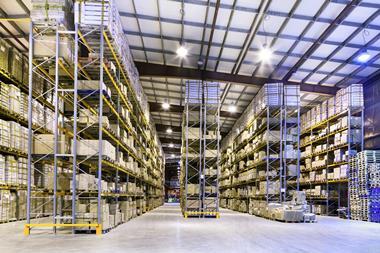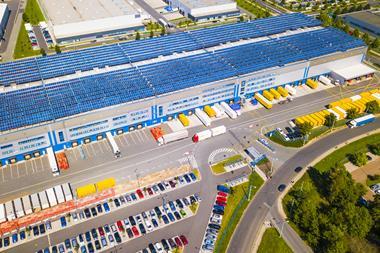Logistics is booming, thanks in no small part to the year-long pandemic and people switching to buying online. This is fuelling demand for warehouses to store our future online purchases. Grocery shopping alone in the UK was trending at around 7% pre-pandemic and is now at around 14%.

With the increase in activity comes responsibility. A challenge for logistics is how to reduce its environmental impact – particularly embodied carbon – as it expands facilities, through materials used, responsible sourcing and transportation of resources and energy consumed during construction.
The push towards a carbon neutral future was enshrined in UK law two years ago, requiring greenhouse gas emissions to be reduced to net zero by 2050. We believe we have a responsibility to inspire our clients to tackle the problem and tackle it now.
Being able to influence a project’s sustainable credentials from early on – showing the client the value of procuring the right materials and systems and involving sustainability consultants from the outset – can bring significant value further down the line.
Warehousing can equate to around a quarter of related transport emissions. Energy systems for heating and cooling these large sheds have to get smarter. Using the latest technology to lower consumption is the way forward.
Warehouse construction must be overhauled, taking cues from housing and commercial schemes that use environmentally-aware building methods such as modular, timber and steel.
Business case
The latest scheme by SEGRO is an example of best practice. The industrial developer and REIT is building what it says will be London’s first truly green industrial development.
The 190,000 sq ft development in Tottenham will generate zero landfill waste during its construction. Once built, the scheme will have net zero energy standards for base-build, feature green walls and have solar panels generating 10% more energy than the building uses.

There is certainly an ethical case for sustainable logistics, but I would stress there is also a compelling business case for clients.
By spending on facilities today, clients can avoid having to adapt such assets later in order to meet the requirements of the 2050 target. Developers are also finding investors are making sustainability a condition to invest.
The challenge for our clients is to be bold and invest capital now to upgrade their buildings to achieve lower energy ratings. This will stand them in good stead, with buildings that benefit from better and longer economic use.
Giles Heather is associate director at Linesight
Industrial and logistics sector abuzz with activity
- 1
- 2
- 3
- 4
- 5
- 6
 Currently reading
Currently readingInvest for the future
- 7
- 8
- 9
- 10
- 11







































No comments yet